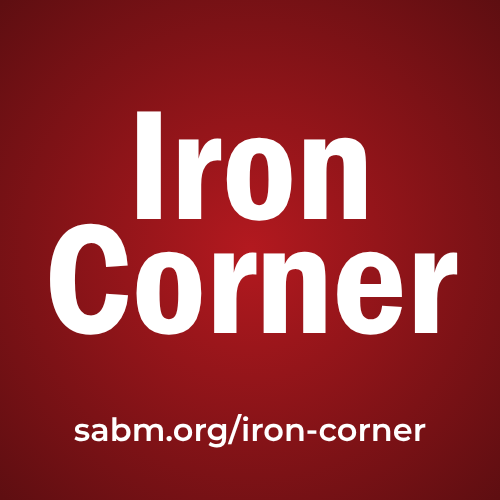|
 Overview | Diagnosis | Treatment Options | Clinical Focus Areas | Perioperative Anemia | Resources Overview | Diagnosis | Treatment Options | Clinical Focus Areas | Perioperative Anemia | Resources
Management of Iron Deficiency in Heart Failure
SUMMARY
- Iron deficiency, with or without anemia, is common in persons with heart failure (HF) and an independent predictor of mortality risk.
- IV iron is recommended in symptomatic patients to improve quality of life and alleviate symptoms.
- Next-gen IV iron therapies (ferric derisomaltose and ferric carboxymaltose) are recommended to reduce risk of recurrent hospitalizations for heart failure.

How Common Is Iron Deficiency in Heart Failure?
- The prevalence of iron deficiency among persons with chronic heart failure ranges from 35-55% and may be up to 83% among persons admitted with acute decompensated HF.
What Is the Impact of Iron Deficiency on Clinical Outcomes?
- Iron deficiency is an independent predictor of mortality risk in heart failure, irrespective of comorbid anemia and/or chronic kidney disease.
- Iron deficiency also has a significant impact on quality of life and exercise capacity.
Who Should Receive Screening?
- All patients with HF should have iron studies including serum iron, serum ferritin, and transferrin saturation.
- If ferritin is < 100 mcg/L (absolute iron deficiency) or 100-299 mcg/L + TSAT < 20% (functional iron deficiency), IV iron repletion is recommended.
- If iron studies are normal, annual screening is recommended to surveil for iron deficiency.
What IV Iron Therapies Are Recommended for Persons with Heart Failure?
- Ferric derisomaltose (FDI) and ferric carboxymaltose (FCM) have been studied extensively in randomized controlled clinical trials among persons with HF and are safe and effective even when administered during hospitalization for acute decompensated heart failure.
- Compared to placebo, IV iron repletion with FDI or FCM reduced the risk of recurrent HF hospitalization and cardiovascular mortality.
- These next-generation IV iron therapies may be given as a single dose total dose infusion up to 1,000 mg resulting in rapid repletion in 1-2 infusions.
| Study | N | Inclusion criteria | Intervention | Primary outcomes | Secondary outcomes |
|---|
| AFFIRM-AHF |
1,132 |
- Acute HF (hospitalization requiring IV diuretics, LVEF of <50%, elevated natriuretic peptides)
- ID (ferritin of <100 µg/L or ferritin of 100-299 µg/L + TSAT of <20%)
|
- 1st dose FCM in-hospital at week 0
- 2nd dose at week 6, then at week 12 and week 24 based on Hgb and ID
|
No difference in composite of total HF hospitalizations and CV death at 52 weeks |
Reduction in total HF hospitalizations and the composite of first HF hospitalization or CV death |
| IRONMAN |
1,137 |
- HF (LVEF of ≤45% and elevated natriuretic peptides, or hospitalization for HF within 6 mo)
- ID (ferritin of <100 ng/mL or TSAT of <20%)
|
- FDI at days 0 and 28, then every 4 months based on ID
|
No difference in composite of recurrent HF hospitalizations and CV death |
Reduction in combined endpoint of cardiovascular death or hospital admission for stroke, myocardial infarction, or HF |
| HEART-FID |
3,065 |
- HF (LVEF of ≤40% and either HF within the previous 12 months or an elevated natriuretic peptide level)
- ID (ferritin of <100 ng/mL or ferritin of 100-300 ng/mL + TSAT of <20%), Hgb of 9-13.5 g/dL in women or <15 g/dL in men
|
- FCM weekly × 2 weeks, then every 6 months based on Hgb and ID
|
No difference in hierarchical composite endpoint of death within 12 months, hospitalization for HF within 12 months, or change in 6MWTD from baseline to 6 months |
No difference in composite endpoint of cardiovascular death or HF hospitalization |
What About Oral Iron?
- Oral iron products have poor bioavailability (5-10%) and may take up to a year to replenish iron stores.
- Many preparations cause gastrointestinal side effects and require multiple doses per day which may lead to poor adherence.
- Oral iron use is not recommended among persons with heart failure.
References
- https://pubmed.ncbi.nlm.nih.gov/33197395/
- https://www.thelancet.com/journals/lancet/article/piis0140-6736(22)02083-9/fulltext
- https://www.nejm.org/doi/full/10.1056/NEJMoa2304968
|





